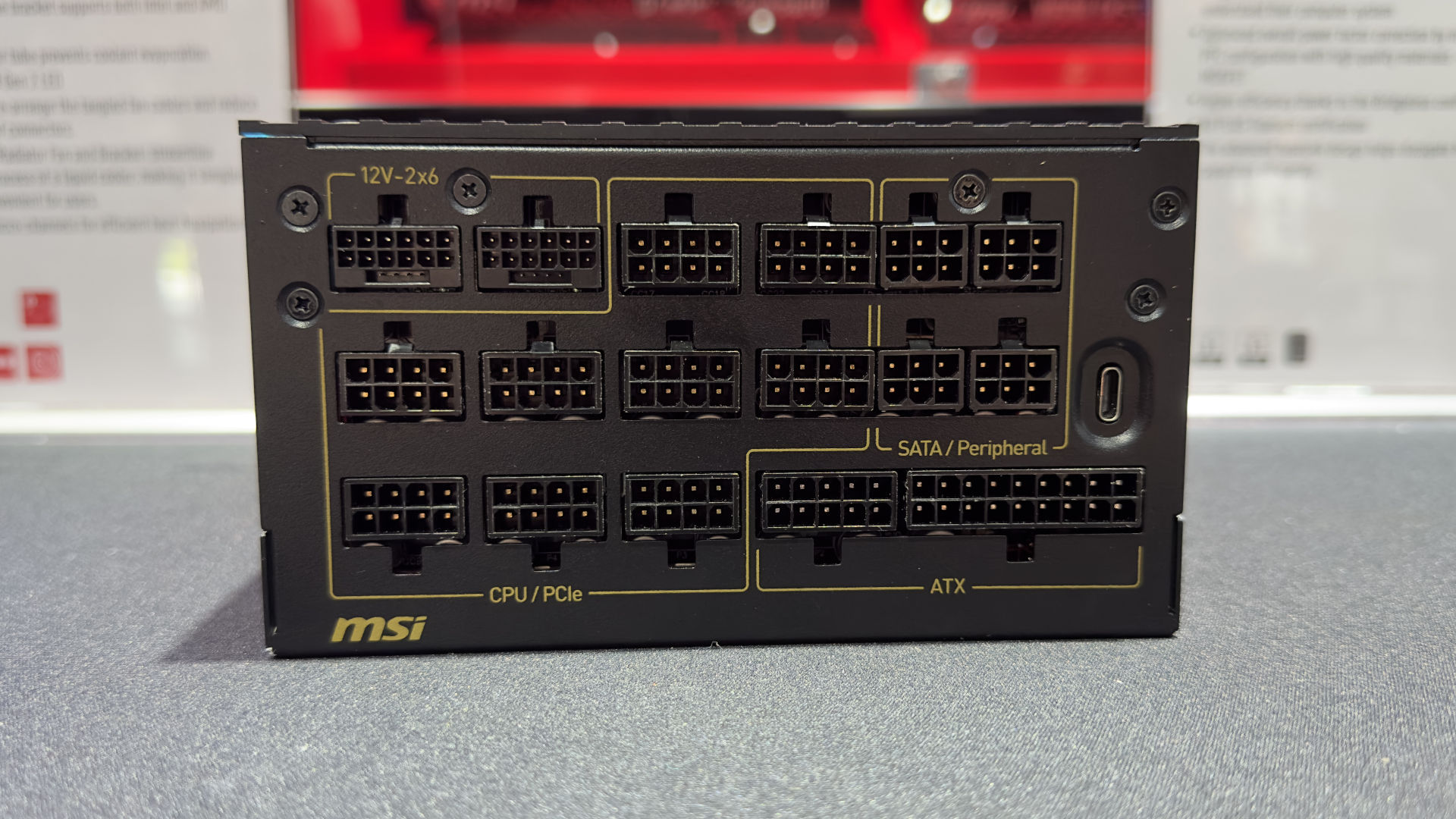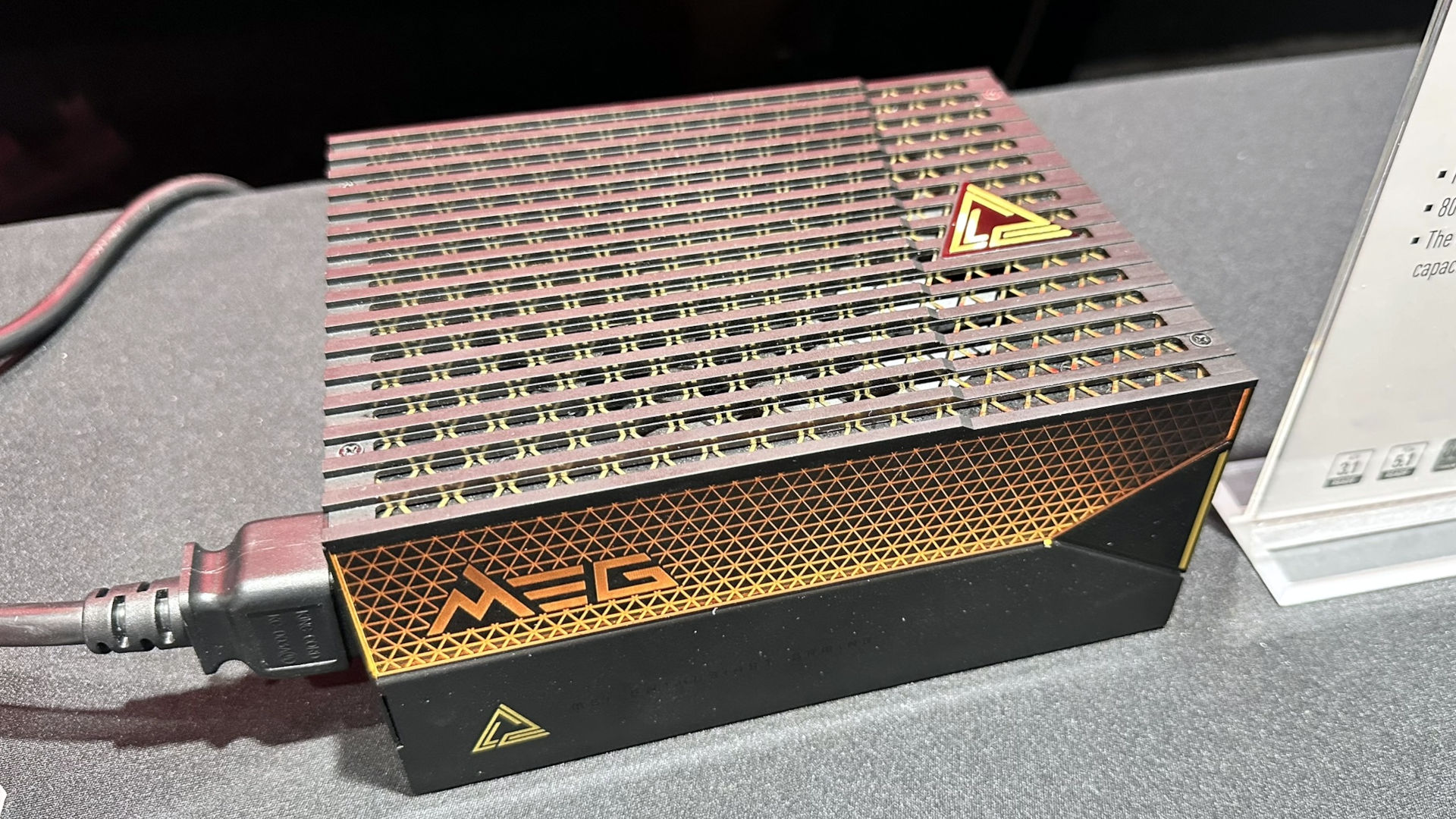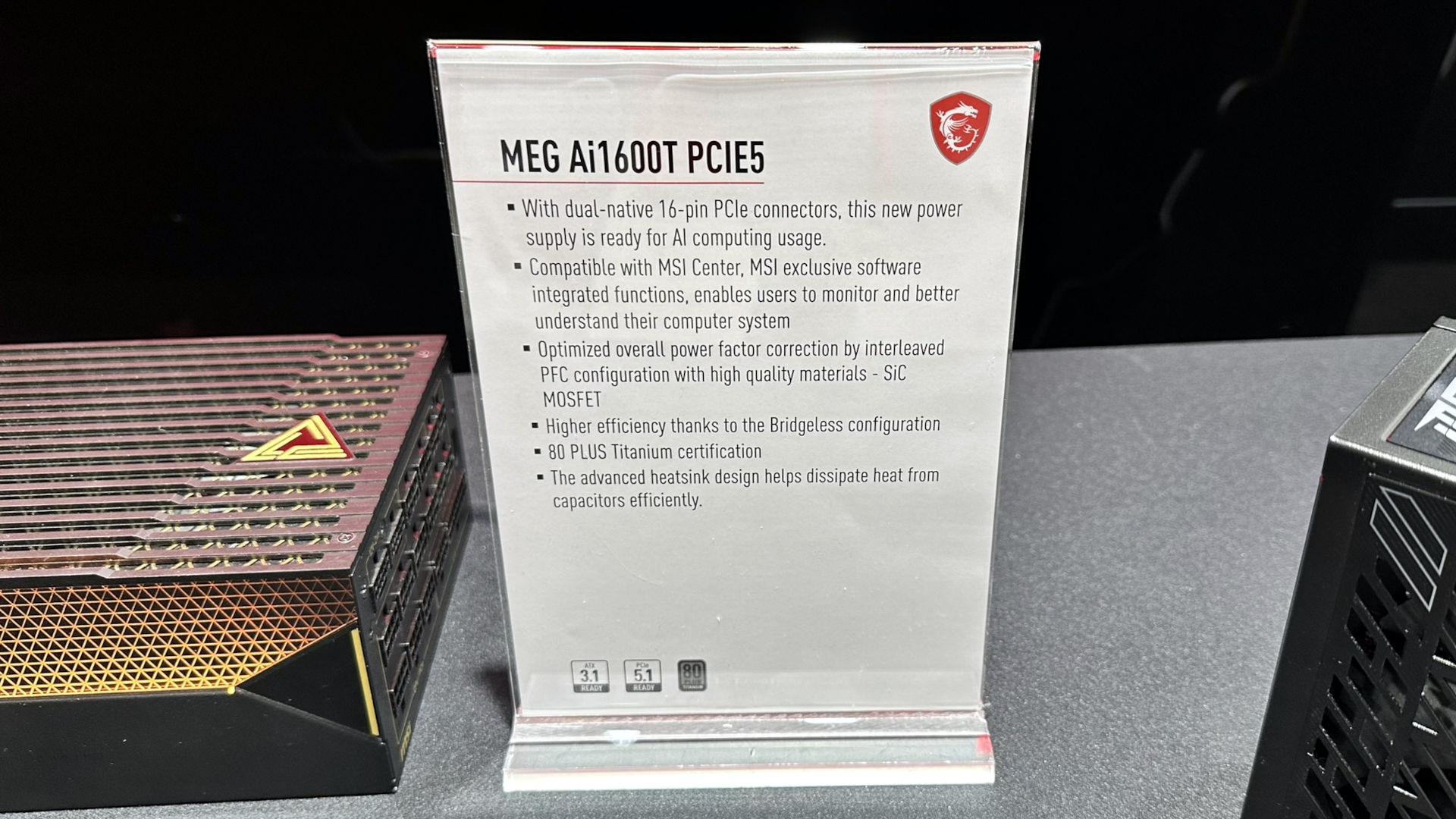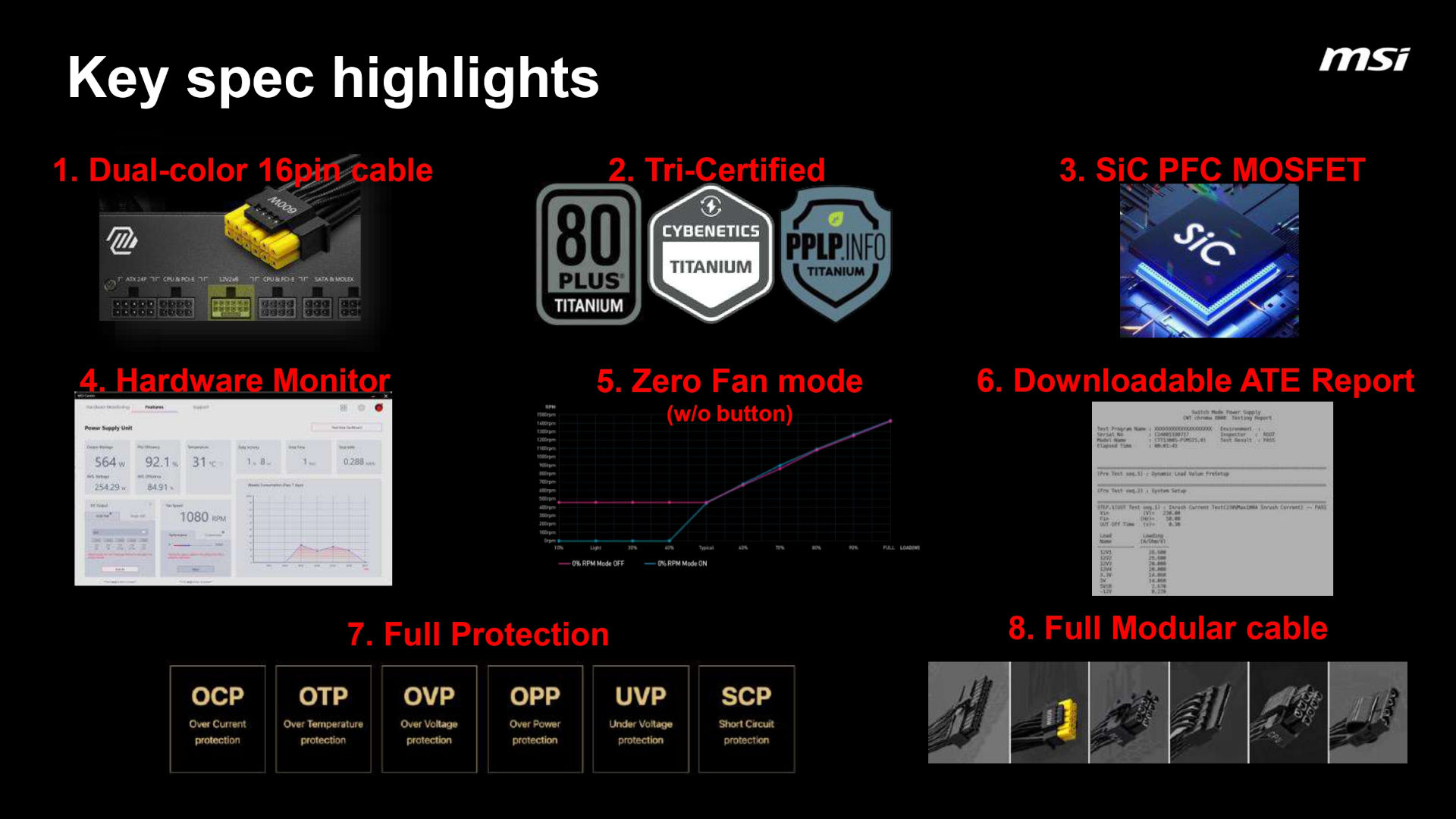MSI's new top-end PSU boasts two 12V-2x6 sockets for twin GPUs, or just one really, really big one
I don't need a PSU that can handle 1200 W worth of GPUs but I do kinda want one.

I was recently over in China, visiting MSI's factory where it makes motherboards, graphics cards, monitors, etc, and at the event, the company launched several new products. One of which was its MEG AI1600T power supply unit, replete with RGB lighting, a host of high-end features, and oh yes—two 12V-2x6 sockets for Nvidia graphics cards.
The days of multi-GPU setups (aka SLI and CrossFire) are long dead and given that MSI specifically notes that the AI1600T is "ready for AI computing usage", it's clear that this PSU is aimed directly at folks wanting to do a spot of homebrew AI stuff. But a few of us at the event got to talking about how it could be for something else.
In passing, one of MSI's engineers had said that its new PSUs were all ready for the next generation of graphics cards and that obviously refers to Nvidia's RTX 50-series, as they're the ones that seem next in line to appear (AMD's RDNA 4 series look likely to launch much later on).
The 12V-2x6 socket is an updated version of the somewhat infamous 12VHPWR socket that Nvidia first introduced in some of its RTX 30 models, e.g. the GeForce RTX 3090. Designed in conjunction with the PCI-SIG, the connector is rated to a heady 600 W of power but as some RTX 4090 owners found, shoddily made cables (or even good ones that just weren't fully seated) meant the design was prone to melting.
So that got us thinking. What if the RTX 5090 has a much higher TGP than the RTX 4090? Rather than being a 450 W card, what if it's 550 or even 600 W? While the 12V-2x6 design is supposed to prevent another episode of Meltgate, what if Nvidia was concerned about the reputation of the previous design, and thought that it would come across as being a much safer system having all that power spread over two connectors?
Using two cables would mean each one could be kept well under its rated power/current limit and help prevent too much heat develop in one small area on the circuit board.
The obvious issue with this idea is that how many potential RTX 5090 buyers have a PSU with two 12VHPWR/12V-2x6 sockets? I can't see Nvidia selling a card that requires one to buy a new PSU but then again, it'd be one hell of a marketing thing.
The biggest gaming news, reviews and hardware deals
Keep up to date with the most important stories and the best deals, as picked by the PC Gamer team.





I don't think the RTX 5090 will be as power-hungry as that, though, and I really think that the two 12V-2x6 power sockets on the AI1600T PSU are just for multi-GPU setups handling AI workloads.
But I do wonder what the future for high-end graphics cards is going to be, in terms of power consumption. While the 450 W TGP of the RTX 4090 is incredibly high, the card often doesn't reach that limit in gaming and it's by no means the most power greedy GPU ever launched.
That honour goes to AMD's Radeon R9 290X2 and 390X2, both of which were twin GPU cards with 580 W power limits. There are plenty of other cards with even higher power limits but they're all for workstations and whatnot.

Best CPU for gaming: The top chips from Intel and AMD.
Best gaming motherboard: The right boards.
Best graphics card: Your perfect pixel-pusher awaits.
Best SSD for gaming: Get into the game ahead of the rest.
A single 12V-2x6 cable would, in theory, be sufficient for either of those AMD cards and, as far as I can tell, any GPU that's heading our PC gaming way in the foreseeable future.
With AMD bailing out of the ultra-high-end market, there's nothing to stop Nvidia from making its halo model utterly ludicrous in terms of size and power.
And even though the lack of competition will mean there's nothing to keep prices in check, there will be no shortage of PC gamers who will line up to buy one.
There's no sign of 600 W GPUs just yet but who knows in the near future? If they do appear, then you'll almost certainly going to need a PSU like this MSI one. And I bet if it does happen, there'll be a vendor launching a four-socket PSU just because it can!

Nick, gaming, and computers all first met in 1981, with the love affair starting on a Sinclair ZX81 in kit form and a book on ZX Basic. He ended up becoming a physics and IT teacher, but by the late 1990s decided it was time to cut his teeth writing for a long defunct UK tech site. He went on to do the same at Madonion, helping to write the help files for 3DMark and PCMark. After a short stint working at Beyond3D.com, Nick joined Futuremark (MadOnion rebranded) full-time, as editor-in-chief for its gaming and hardware section, YouGamers. After the site shutdown, he became an engineering and computing lecturer for many years, but missed the writing bug. Cue four years at TechSpot.com and over 100 long articles on anything and everything. He freely admits to being far too obsessed with GPUs and open world grindy RPGs, but who isn't these days?

